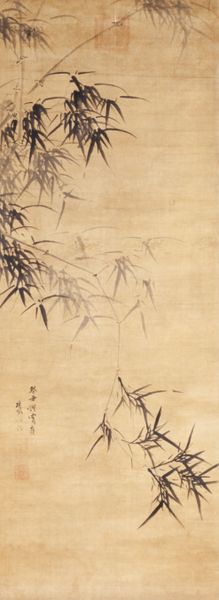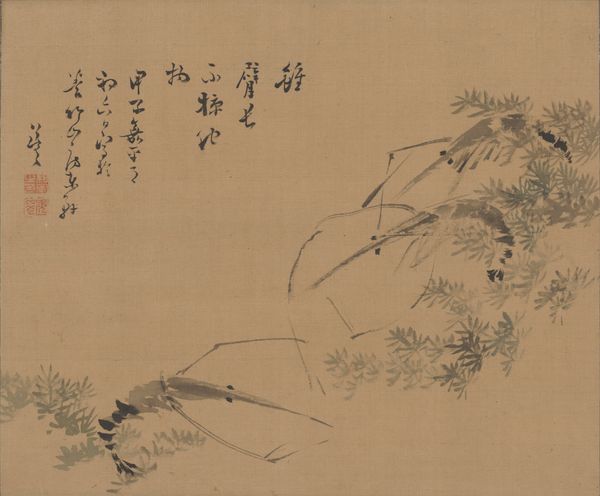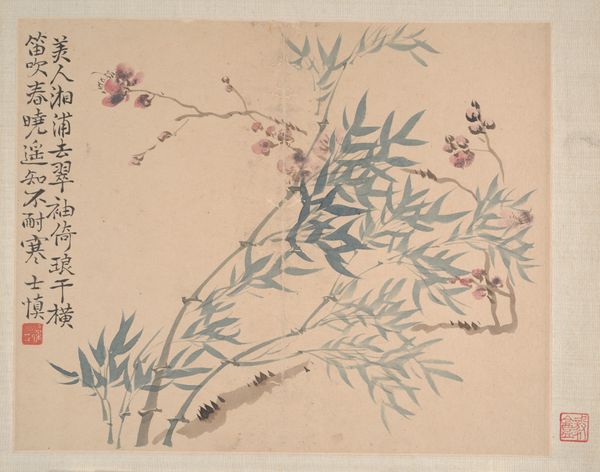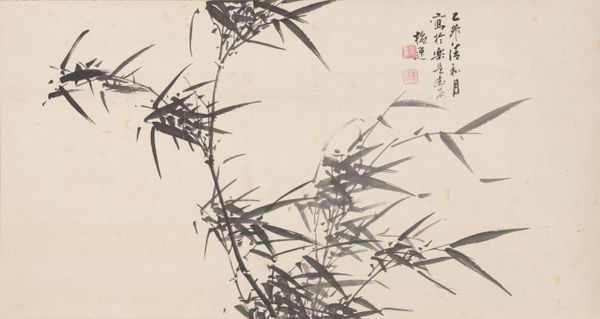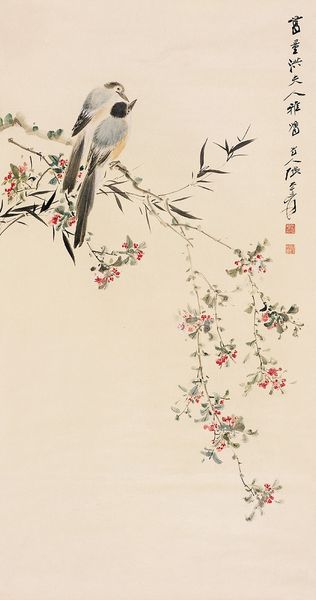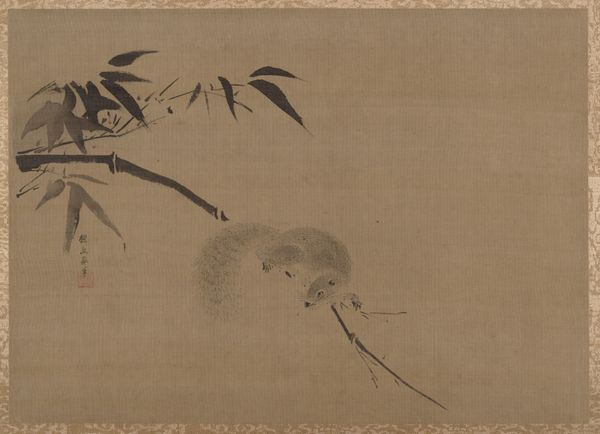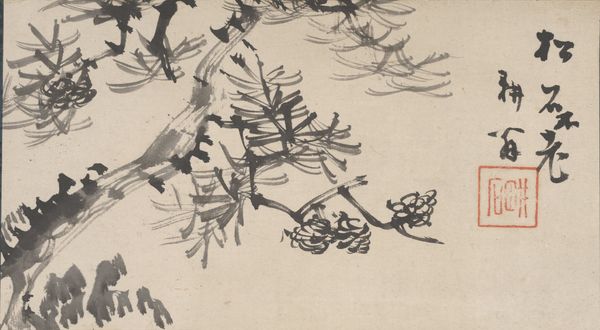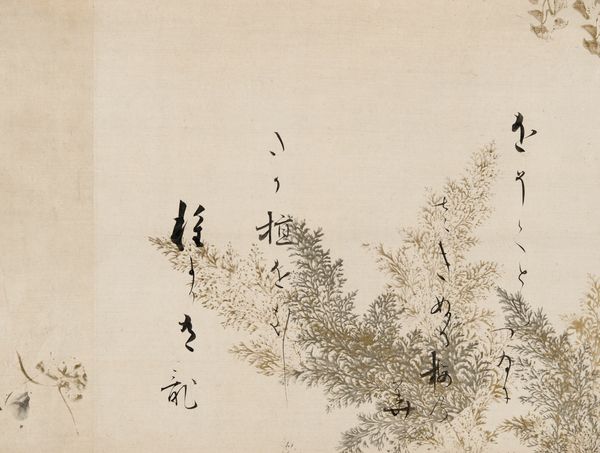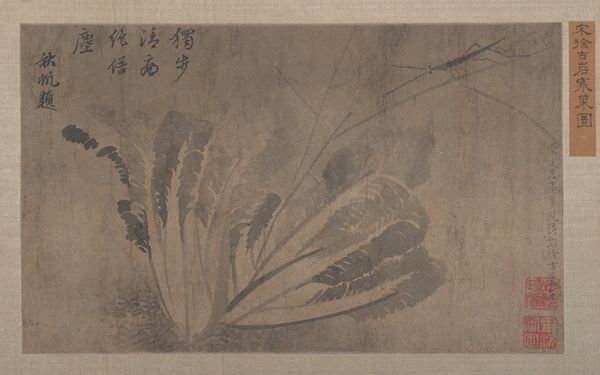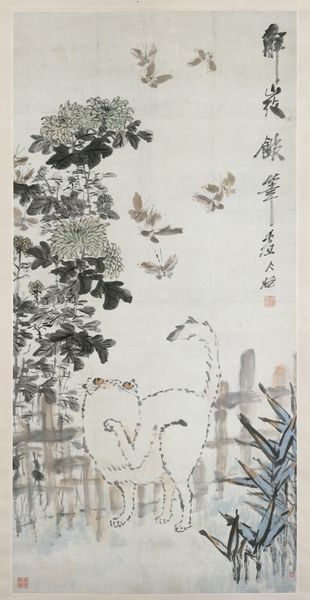
painting, paper, ink-on-paper, hanging-scroll, ink
#
painting
#
asian-art
#
landscape
#
ukiyo-e
#
japan
#
paper
#
ink-on-paper
#
hanging-scroll
#
ink
#
orientalism
#
abstraction
#
line
#
calligraphy
Dimensions: 11 9/16 × 22 1/4 in. (29.37 × 56.52 cm) (image)44 15/16 × 23 1/4 in. (114.14 × 59.06 cm) (mount, without roller)
Copyright: Public Domain
Curator: This hanging scroll, created around the mid-19th century, showcases bamboo and plum blossoms in ink on paper. It’s by Fujimoto Tesseki and currently resides here at the Minneapolis Institute of Art. Editor: There's a striking simplicity to it. The sparse strokes, the monochrome palette, create a mood of serene contemplation, wouldn't you agree? Almost like a visual haiku. Curator: Absolutely. Bamboo, of course, represents resilience and flexibility in the face of adversity, while the plum blossom signals the coming of spring, of renewal. Both powerful symbols within Japanese art and culture. Tesseki is evoking, therefore, the promise of hope even in bleak times. Editor: It makes one consider the socio-political climate of Japan at the time, too. The late Edo period was marked by both cultural flourishing and growing internal instability as the country faced increasing pressure from the West to open up its borders. So an image focusing on themes of renewal and resilience is particularly meaningful. Was this work commissioned, or intended for a wider audience? Curator: It is highly likely this piece, given its sophisticated calligraphy, was made for a well-educated literati circle who deeply understood its symbolism. Consider how line quality here shapes the feel of the entire work: from sharp, energetic lines that capture the bamboo's strength, to soft and flowing strokes bringing out the delicacy of the plum blossoms. Even its monochrome nature reflects the artist's emphasis on essential form. Editor: It certainly invites us to contemplate not only the subject matter itself, but also the values of Japanese society during this transitional era. We can also note how the composition reflects certain artistic principles: the intentional use of empty space and the asymmetrical balance. I suppose there are ways that social norms become visually manifested in painting like this. Curator: Indeed, the work's apparent simplicity contains layers of meaning accessible through knowledge of cultural memory and its visual symbols. Editor: Seeing how social narratives subtly weave into the visual fabric of art certainly deepens the viewing experience.
Comments
No comments
Be the first to comment and join the conversation on the ultimate creative platform.
